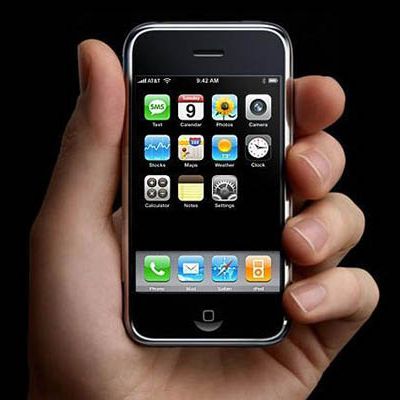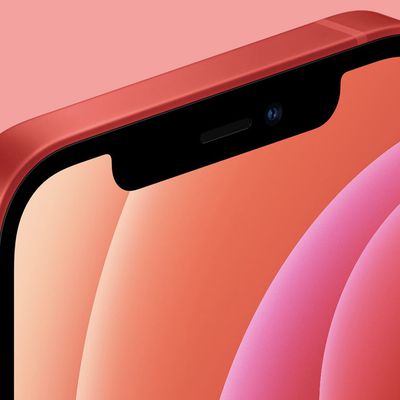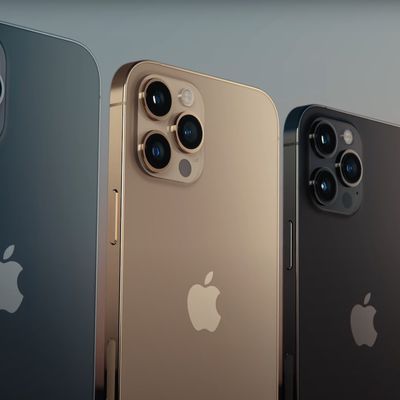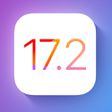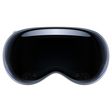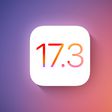In 2007, Apple launched the original iPhone, kickstarting the modern smartphone era which is now dominated by the Apple iPhone and Google Android platforms. We've had 16 generations of iPhones so far, with the latest models, the iPhone 14, iPhone 14 Plus, iPhone 14 Pro and iPhone 14 Pro Max having been introduced in September 2022. Apple typically follows an annual update cycle, introducing new high-end flagship models while often discounting prior-year models and selling them at more affordable price points.
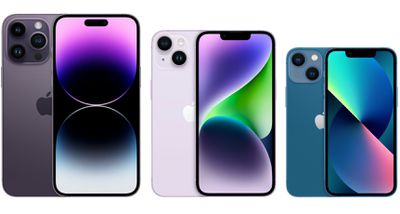
iPhone vs Android
Over the years, the Android and iPhone platforms have evolved to the point where feature-wise, they're similar in function. Android smartphones are made by multiple manufacturers, but the core operating system is provided by Google, which leads to a wider variety of phones and price points to choose from, but poorer integration between software and hardware.
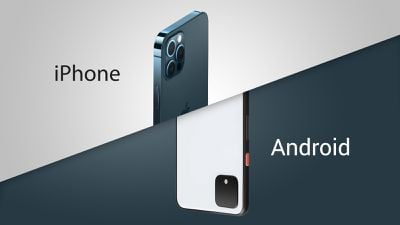
Apple's control of both the iPhone and the operating system (iOS) results in a more consistent experience plus ongoing support. With iOS 16, Apple supports all iPhones that were introduced in the last four years, so the majority of active iPhone owners can and do upgrade to the newest version of iOS that Apple rolls out each year.
Android updates, though, are more inconsistent and often don't make it to all Android-based smartphones because each manufacturer has to implement support on an individual basis. So while Google also does yearly Android updates, the reality is that a lot of older Android smartphones don't get the new software.
With Apple's control and curation of the iPhone experience, the iPhone is largely considered to be the more secure platform, and Apple has made it a point to focus heavily on privacy. Apple's iOS is, however, less customizable than Android, so for individuals who prefer flexibility and customization options, the Android operating system may be worth looking at.
How Do iPhone Updates Work?
Here are the basics you should know about how Apple updates the iPhone and the iOS operating system.
Each fall, usually in September, Apple releases a new series of flagship smartphones. These often come at high prices and feature the latest technologies, with Apple offering high-end models and still high-end but more affordable models. Prior-year iPhones often stick around with lower price points as cheaper alternatives to the latest and greatest technology, and occasionally, Apple launches an iPhone like the low-cost iPhone SE outside of the normal fall timeline.
At the current time, Apple's iPhone lineup includes the iPhone SE (2022), iPhone 12 (2020), iPhone 13 (2021), iPhone 13 mini (2021), iPhone 14 (2022), iPhone 14 Plus (2022), iPhone 14 Pro (2022), and iPhone 14 Pro Max (2022).
Apple also debuts an updated version of iOS at the same time that new iPhones launch, but new versions of iOS are pre-introduced every year at Apple's annual Worldwide Developers Conference to give developers time to incorporate new features and technologies into their apps ahead of when the software becomes available to the public. The current iPhones run iOS 16.
In this guide, we go over all of the iPhones that are in the current Apple lineup, offer up some buying suggestions, and provide tips and resources for both new and existing iPhone owners.
iPhone 14 Pro and iPhone 14 Pro Max
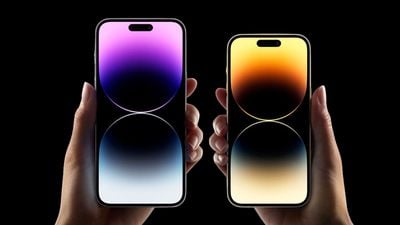
The iPhone 14 Pro and 14 Pro Max are Apple's current flagship devices with all of the top-of-the-line features and the most bells and whistles. The Pro models are for those who want to get the most out of their iPhones.
Pricing on the iPhone 14 Pro starts at $999, while pricing on the iPhone 14 Pro Max starts at $1,099. The two iPhones are identical when it comes to feature set, with size and battery capacity being the only two differences between the iPhone 14 Pro and the iPhone 14 Pro Max.
The iPhone 13 Pro Max has a larger 6.7-inch display, while the iPhone 13 Pro has a 6.1-inch display. There were no major design changes to the body, with Apple using the same flat-edged look that was introduced with the iPhone 12 lineup.
Both iPhones have edge-to-edge OLED displays with slim bezels and a "Ceramic Shield" front cover that offers better drop protection. The Pro models this year do not have a notch for the TrueDepth camera system, with Apple instead adopting a new "Dynamic Island" that is a pill-shaped area housing the hardware.
The Dynamic Island has been incorporated into the iPhone's interface and it is able to show various notifications and app information for phone calls, timers, Face ID, Bluetooth connections, and more. The two iPhones continue to use all-glass bodies with stainless steel frames, and Apple is offering new colors that include Deep Purple and Space Black.
The iPhone 14 Pro and Pro Max are equipped with the A16 chip, and this year, they are the only iPhones to use it. The standard iPhone 14 models have an A15 chip that was previously used in the iPhone 13 Pro models. The A16 allows for additional battery life, and paired with new screen technology, it enables an always-on display feature that shows the time and widgets even when the display is off.
There continues to be a three-lens camera setup, but Apple has introduced a 48-megapixel Main camera that offers improved low-light performance and a 2x telephoto zoom. There's also an improved Ultra Wide camera and a Telephoto lens, and all of the lenses take advantage of a Photonic Engine that enhances Deep Fusion for a "giant leap" in mid- to low-light photo performance.
Crash Detection is a new feature this year that is able to determine if you've been in a serious car accident, alerting emergency services, and Apple has also added Emergency SOS via Satellite. This feature allows you to get emergency help using satellites if you are out of the range of WiFi and cellular.
Other features include IP68 water resistance, 6GB RAM, ProMotion 120Hz refresh rate, a brighter display, faster 5G, and MagSafe.
The iPhone 14 Pro and Pro Max have Apple's most advanced camera technology to date, and with the addition of the Dynamic Island, Emergency SOS via Satellite, Crash Detection, and an an always-on display, the new iPhones offer a notably more advanced feature set than the standard iPhone 14 and 14 Plus.
Key Features:
- Highest end, highest price
- Triple-lens camera: Main (Wide), Ultra Wide, and Telephoto
- 48-megapixel Main lens with ProRAW support
- Faster 5G
- A16
- Dynamic Island and always-on display
- Higher-quality build materials
Bottom Line: The iPhone 14 Pro and 14 Pro Max are the iPhones to choose if you want the absolute best camera capabilities that you can get in an iPhone, with the Pro Max being the top-of-the-line model due to its increased display size and longer battery life.
iPhone 14 and iPhone 14 Plus (799+)
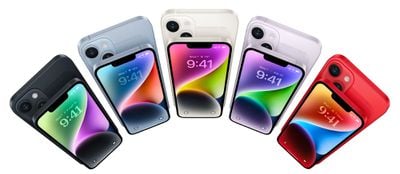
Sold alongside the iPhone 14 Pro and iPhone 14 Pro Max, the iPhone 14 and iPhone 14 Plus are Apple's more affordable flagship devices. The iPhone 14 and 14 Plus feature some of the same capabilities as the Pro models, but are not as feature-rich to keep the price tags lower.
Apple previously offered a 5.4-inch iPhone mini size, but that has been discontinued. This year, there's a 6.1-inch iPhone 14 and a larger 6.7-inch iPhone 14 Plus that replaces the mini in the lineup. The iPhone 14 is priced starting at $799, while the iPhone 14 Plus is priced starting at $899.
Despite the size differences, the iPhone 14 and 14 Plus are essentially identical, featuring a flat-edged design with a glass body and an aluminum frame. They do not offer ProMotion display technology and thus do not support an always-on display, and there is no Dynamic Island. Instead, the iPhone 14 and iPhone 14 Plus continue to feature a standard notch.
For the first time, the regular iPhone 14 models and the Pro models have different chips. While the iPhone 14 Pro uses an A16 chip, the iPhone 14 and 14 Plus have the prior-generation A15 chip with upgraded GPU that was originally used in the iPhone 13 Pro and Pro Max.
There is a dual camera system that features an Ultra Wide and Main (Wide) lens with no Telephoto lens, and while the Main lens is better, it is not the same 48-megapixel Main lens used for the Pro models and offers smaller gains in quality compared to the more expensive iPhone 14 Pro.
The iPhone 14 models have support for mmWave and Sub-6GHz 5G, using the same Qualcomm chip as the Pro models, and they're equipped with a magnetic ring for use with MagSafe accessories. Crash Detection and Emergency SOS via Satellite are two new features shared with the 14 Pro and Pro Max.
Between the iPhone 14 and 14 Plus, the features are identical with the exception of screen size and battery, as the iPhone 14 Plus can accommodate a larger battery size.
Key Features:
- Diagonal dual-lens camera: Main (Wide), Ultra Wide
- Crash Detection
- Emergency SOS via Satellite
- 5G support
- A15 chip
Bottom Line: The iPhone 14 and 14 Plus offer some of the same features as the iPhone 14 Pro and 14 Pro Max at a more affordable price. The differences are limited primarily to the camera and the display, and may not be of interest for those who are not heavily invested in iPhone photography, making the $200+ savings worth it for some people. This year does, however, mark the biggest difference between Pro and non-Pro models, so you are getting quite a bit more for the extra money with the 14 Pro.
iPhone 13 and iPhone 13 Mini ($599+)
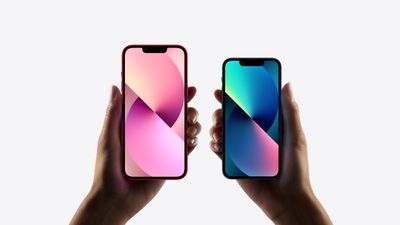
First introduced in 2021, the iPhone 13 and iPhone 13 mini remain in the iPhone lineup as lower-cost prior-generation options for those who are looking to save some cash.
The 5.4-inch iPhone 13 mini is the last 5.4-inch iPhone, and Apple does not plan to make additional smaller-sized iPhones in the foreseeable future with the exception of the iPhone SE. The iPhone 13 mini is the only option for those who want a 5.4-inch iPhone.
Compared to the iPhone 14 and 14 Plus, the iPhone 13 and 13 mini have a 4-core A15 chip (compared to 5-core in the iPhone 14), 4GB of RAM instead of 6GB, and Bluetooth 5.0 instead of Bluetooth 5.3. Design wise, the iPhone 13 and iPhone 14 models are largely identical in appearance with the exception of the colors.
They do not have the upgraded Qualcomm X65 chip, and while both the iPhone 13 and iPhone 14 models use 12-megapixel Main/Wide and Ultra Wide cameras, the iPhone 14 has lower apertures for better low-light performance. There's one hour less battery life, and the iPhone 13 models do not support Emergency SOS via Satellite or Crash Detection.
Key Features
- A15 chip
- 5G
- Diagonal dual-lens camera
- 5.4-inch size option
Bottom Line: If you're deciding between the iPhone 13 and the iPhone 14 and don't care about Crash Detection or Emergency SOS via Satellite, it might be worth saving $100 to $200 by choosing a prior-generation iPhone. The iPhone 13 is still a solid phone for everyday use and it has many of the same features as the iPhone 14. Those who want a 5.4-inch iPhone should opt for the iPhone 13 mini as there is no iPhone 14 equivalent.
iPhone 12 ($599+)
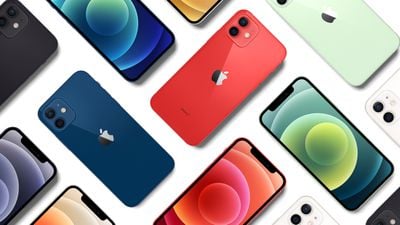
Sold alongside the iPhone 14 models, the iPhone 12 is a two-year-old smartphone that was first introduced in 2020 and is now being offered as a lower-cost step-down option.
Priced starting at $599, the iPhone 12 is almost identical in design to the iPhone 13 and iPhone 14, but it has a wider notch and a different camera layout, plus it's just a bit thinner.
The iPhone 12 features a glass body and an aluminum frame with IP68 water resistance, and it's available in black, white, red, green, blue, and purple. There are no differences in the display quality between the iPhone 12 and iPhone 14, with the exception of an increase in brightness (800 nits for the iPhone 14 vs. 625 nits for the iPhone 12).
The iPhone 12 models have Wide and Ultra Wide camera setups like the iPhone 14 models, but lack features like Cinematic mode, Action mode, and Photographic Styles. The iPhone 14 models also offer improved sensor-shift optical image stabilization, Smart HDR 4, and a lower aperture for better low-light performance.
Rather than the A15 or A16 chip, the iPhone 12 models use a two-year-old A14 chip, which is still speedy, but a step down in CPU and GPU performance. The iPhone 12 models have support for mmWave and Sub-6GHz 5G, the same as the iPhone 14 models, and they support MagSafe.
Perhaps the most significant difference between the iPhone 12 and iPhone 14 is the battery life. The iPhone 14 lasts for up to 2.5 hours longer than the iPhone 12.
Key Features:
- Dual-lens camera: Ultra Wide, Wide
- Fewer photography modes
- 5G support
- A14 chip
Bottom Line: The iPhone 12 is a two-year-old iPhone at a price point that's $200 cheaper than the iPhone 14 and $100 cheaper than the iPhone 13 mini. If you're looking to save some money and don't mind hardware that's a couple of years old, the iPhone 12 may be worth considering. Compared to the iPhone 14, you're missing out on longer battery life, faster performance, camera improvements, Crash Detection, and Emergency SOS via Satellite, so if you can live without those, the iPhone 12 can save you some money.
iPhone SE 2022 ($429+)
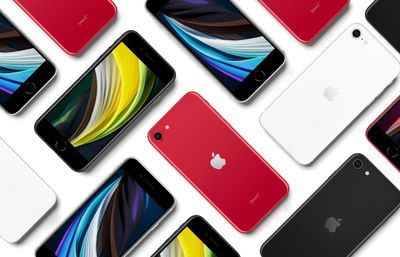
Introduced in March 2022, the iPhone SE is Apple's most affordable iPhone, and it replaces the 2020 iPhone SE.
Priced at $429, the iPhone SE is identical in design to an iPhone 8 with a 4.7-inch LCD display and thick bezels at the top and bottom of the device, housing the Home button at the bottom and the front-facing camera, speaker, and microphone at the top.
The iPhone SE is now the sole iPhone that Apple sells with Touch ID, which makes it ideal for those who prefer a fingerprint sensor to Face ID. It used to be the smallest iPhone available, but the iPhone 13 mini is just a bit smaller overall despite having a larger display.
The iPhone SE has a glass front and back with an aluminum frame, and it supports wireless charging. Inside, it is equipped with the same 4-core A15 Bionic processor that's in the iPhone 13.
While the iPhone SE has a fast A15 chip, Apple is using lower-cost components for the rest of the device, and it is missing the bells and whistles of Apple's more expensive smartphones such as multi-lens camera setups, OLED all-screen displays, and Face ID.
Key Features:
- Touch ID
- Same A15 chip as iPhone 13
- Super low price
Bottom Line: The iPhone SE is the phone to get if you prefer Touch ID, if you're looking for a smaller device, or if want Apple's most affordable option. At $429 with an A15 chip, it's a great deal.
Frequently Asked Questions
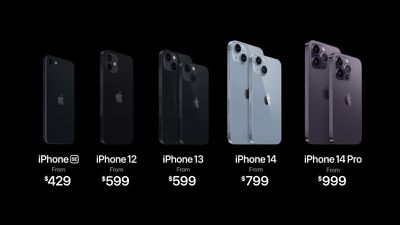
There's no one single iPhone that's best for everyone, as picking the right smartphone for you needs to take into account factors like budget, desired battery life, preferred feature set, and more.
If, for example, you're not a fan of Face ID and want to use Touch ID, you're going to want to choose the iPhone SE. If you want the absolute best photographic capabilities, you're going to want the iPhone 14 Pro or 14 Pro Max, and if you want something that has a solid feature set at a great price, the iPhone 14 is what you'll want to look at. For those who want one-handed usage, the iPhone 13 mini is the phone to pick.
Below, we've outlined some of the best iPhone choices based on different scenarios or features that you might be looking for.
Which iPhone Has the Best Battery Life?
With their more efficient A16 processors, the iPhone 14, 14 Plus, and 14 Pro, and 14 Pro Max have the longest battery life of Apple's iPhones.
Of the three, the 6.7-inch iPhone Pro Max has the longest battery life because it has the space for a larger battery. It offers up to 29 hours of video playback, up to 25 hours of streaming video playback, and up to 95 hours of audio playback.
Which iPhone Has the Best Camera?
With their updated triple-lens camera systems 48-megapixel Main camera, and LiDAR Scanners, the iPhone 14 Pro and iPhone 14 Pro Max have the best iPhone cameras that you can get. Both of the new iPhones include a three-lens camera system with an ƒ/2.8 Telephoto lens, an ƒ/1.78 Main lens (with 48 megapixels), and an ƒ/2.2 Ultra Wide lens.
With the new Photonic Engine that builds on Deep Fusion, low-light performance is enhanced across all lenses. You'll see up to 2x better low-light photos with the Main lens, up to 2x better low-light photos with the Telephoto lens, and up to 3x better low-light photos with the Ultra Wide lens.
Apple's new 48-megapixel sensor can be used in full resolution with ProRAW, or with a quad pixel feature that scales images to 12 megapixels while allowing more light into an image. The new lens enables a 2x telephoto mode that joins the 3x mode enabled by the dedicated Telephoto lens. There is a 6x optical zoom range and support for 15x digital zoom.
Both of the Pro models have a LiDAR Scanner that uses light to map out the room around you, creating a 3D depth map of the scene. It's great for augmented reality, but it also enables some impressive new photographic capabilities such as Night mode portraits and faster autofocusing.
There are also video improvements including a new Action mode that mimics what you can get with a gimbal, and ProRes video is an iPhone 14 Pro exclusive.
Which iPhone Has Touch ID?
If you want an iPhone with Touch ID, your only option is the 2022 iPhone SE. Apple stopped using Touch ID for its flagship iPhones in 2017, and the 2018, 2019, 2020, 2021, and 2022 flagship iPhone lineups have not included an updated Touch ID iPhone.
The iPhone SE features Touch ID rather than Face ID to keep the device ultra-affordable, which is great for those who prefer using a fingerprint sensor over facial recognition.
Which iPhone is Best For One-Handed Use?
At 5.4 inches, the iPhone 13 mini is the smallest iPhone that Apple has introduced since the 2016 iPhone SE, and it is ideal for one-handed use. The 13 mini is not as small as some prior iPhones like the 2016 SE and the iPhone 5s models and earlier, but it is the smallest iPhone on the market today.
At $599, the iPhone 13 mini is the last remaining 5.4-inch iPhone that's available, as Apple did away with it in the iPhone 14 lineup.
Which iPhone is the Best Value?
If you want a modern iPhone with the latest chip, solid camera features, OLED display, and 5G connectivity, the iPhone 14 and 14 Plus are the best values at $799 and $899, respectively. They offer an impressive feature set at their price points, with the iPhone 14 being the best deal.
If you don't need the latest bells and whistles and don't mind losing out on a bit of performance and battery life, the iPhone 13 and 13 mini, which are up to $200 cheaper than their iPhone 14 counterparts, are well worth considering.
If you want the absolute best price and don't mind bezels, Touch ID, and an inferior camera, the iPhone SE with its A15 chip continues to be an amazing deal at $429.
For many people, the iPhone 14 and 14 Plus are the iPhones to get this year with their lower price point and modern feature set, but the iPhone 13 models are almost as good and are worth considering. If you have an iPhone 13 model already, it's not worth upgrading to the iPhone 14, but either the iPhone 14 or the iPhone 13 are worth checking out if you have an older model.
Which iPhone Has the Most Features?
If you want the iPhone with the most bells and whistles, that's the iPhone 14 Pro and 14 Pro Max. These iPhones offer OLED displays, triple-lens cameras, a glass body with a stainless steel frame (compared to aluminum in the iPhone 13), larger maximum storage capacities, and longer battery life.
Compared to the iPhone 14 models, the iPhone 14 Pro and Pro Max have much better camera capabilities, with the Pro Max being the best iPhone that you can get at this time because of its battery capacity.
In More Detail
Still not sure? We have deeper dives comparing the iPhone 14 models to each other.
- iPhone 14 vs. iPhone 14 Plus Buyer's Guide
- iPhone 14 Pro vs. iPhone 14 Pro Max Buyer's Guide
- iPhone 14 vs. iPhone 14 Pro Buyer's Guide
- iPhone 14 Plus vs. iPhone 14 Pro Max Buyer's Guide
For full details on each phone, explore our roundups:
Upcoming iPhone Rumors
Apple is working on new "iPhone 15" models that will come out in the fall of 2023. Apple is rumored to be introducing faster A-series chips, USB-C connectivity, periscope zoom lens technology, an Apple-designed modem chip, and more. For those who prefer to buy when the newest technology is available, the iPhone 15 models will launch in September 2023.
Guide Feedback
Have questions about choosing an iPhone, notice something we left out, or want to offer feedback on this guide? Send us an email here.


